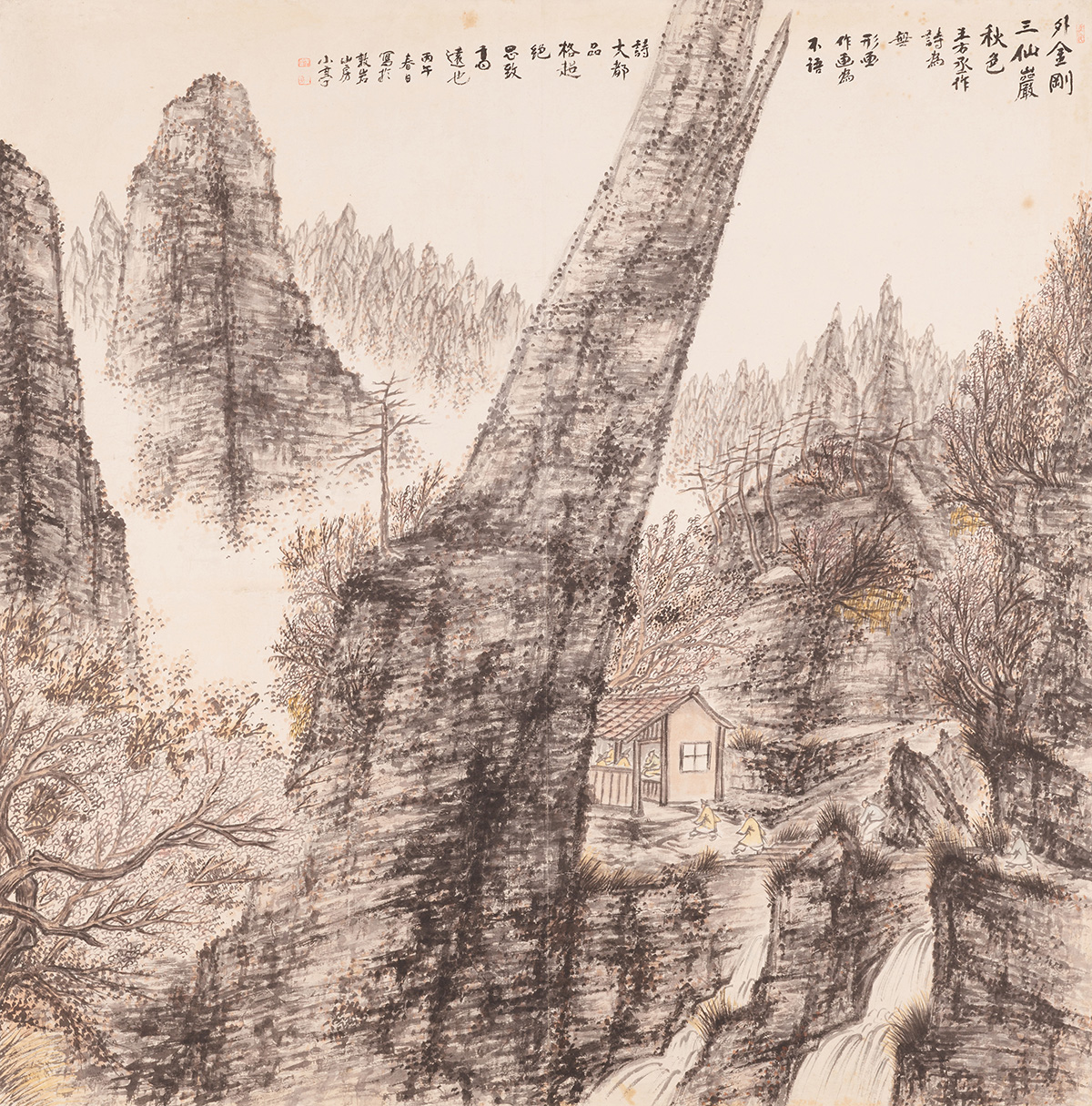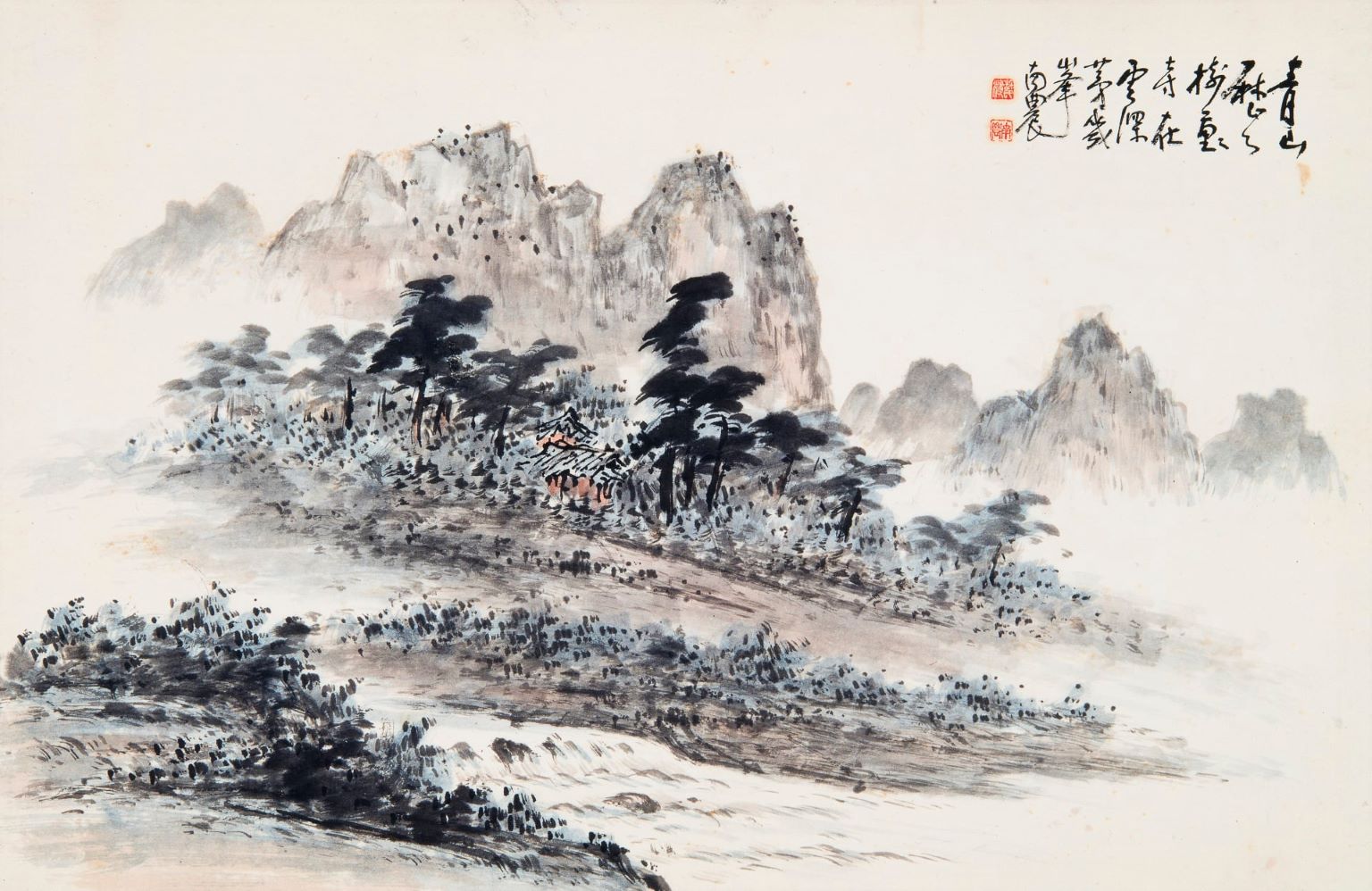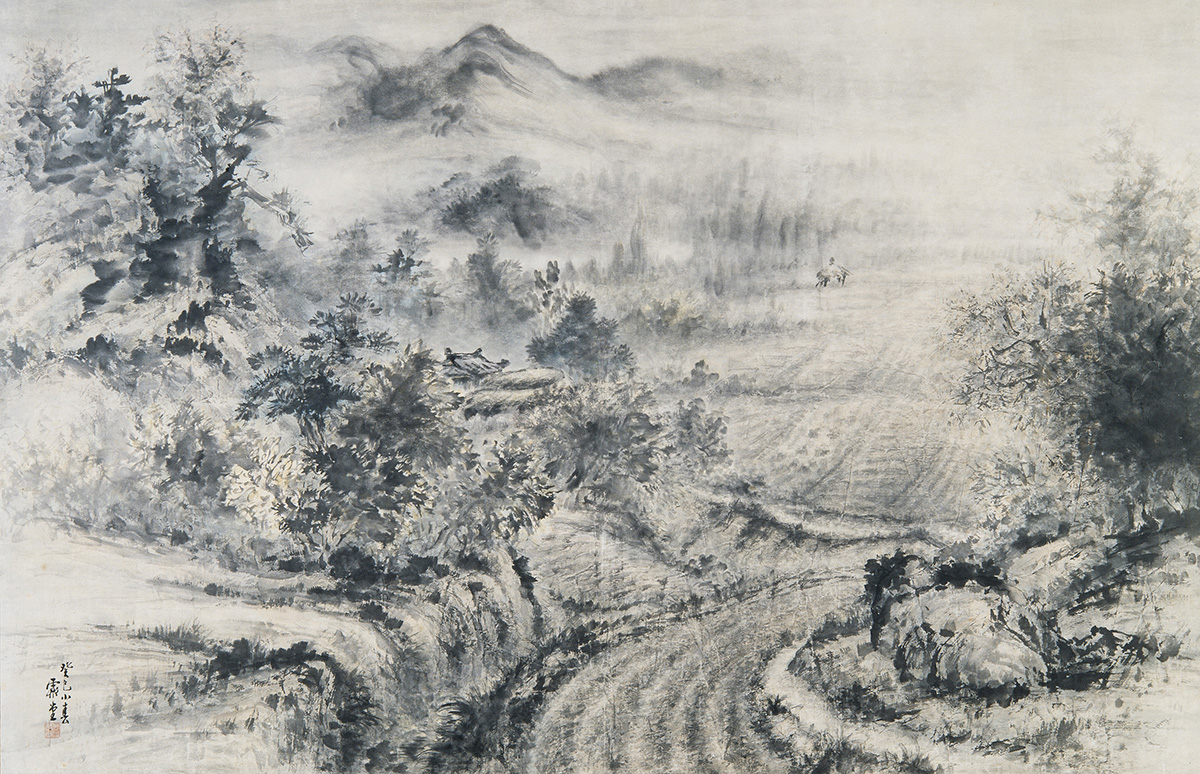
Lee Sangbeom, Early Winter, 1926, Ink and color on paper, 152×182cm. MMCA collection
Lee Sangbeom
* Source: Multilingual Glossary of Korean Art. Korea Arts Management Service
Related
-

Byeon Gwansik
Byeon Gwansik (1899-1976, pen name Sojeong) was born in Ongjin, Hwanghae-do. He was a grandson of the last painter of the Joseon royal family, Sorim Cho Seokjin. He attended the Calligraphy and Painting Society [Seohwa Misulhoe] in 1917 when he turned 18. In 1923, he tried to organize Dongyeonsa with Lee Yongwoo, No Soohyeon, and Lee Yongwoo to look for harmony between old and new styles, but Dongyeonsa was disbanded the following year due to financial difficulties. In 1925, he moved to Japan with Kim Eunho and sat in on classes at the Tokyo School of Fine Arts. There, he developed a new style called Shinnamhwa that incorporated Nambukjong style with western painting techniques. After his return to Korea in 1929, his last official activity was to submit his work to the Joseon Art Exhibition [Joseon misul jeollamhoe]. He left Seoul in 1937 to focus on his art exploring diverse landscapes in Korea. He uniquely depicted Korea landscapes in his painting by using multiple ink-application painting method, broken line method, and unconventional compositions. His representative works include Farm Village (1957), Muchangchunsaegdo, and Oegeumgangsamseonamdo (1970).
-

Eastern painting
Eastern painting (dongyanghwa) refers to the overall body of works created using traditional East Asian materials and methods, in contrast to Western painting. In Korea, Byeon Yeongro’s essay “On Eastern Painting” published in Dong-A Ilbo on 7th, July, 1920 was the first use of the term. The term then began to be used in Japan first to distinguish Oriental style paintings from Western ones. Until the late Joseon era, both calligraphy and painting were categorized under the term seohwa, but during the Japanese occupation of Korea in 1922, the first Joseon Art Exhibition [Joseon misul jeollamhoe] divided the painting section into Western and Eastern styles. Thereafter, the term Eastern-style painting entered official use in the country. After independence, the National Art Exhibition (Gukjeon) continued to use the term “Eastern painting,” but since 1970, numerous arguments were made to replace it with "Korean painting," because the term was imposed unilaterally during the Japanese colonial era.
-

Six Masters of Eastern Painters
The Six Masters were Huh Baeklyun, Kim Eunho, Park Seungmoo, Byeon Gwansik, Lee Sangbeom, and Noh Soohyun, all featured in the Six Eastern Painters Exhibition held by the Seoul Sinmunsa Newspaper Company in December 1971. Of the Ten Masters who were active in the 1940s, these six were the only artists alive at the time of the exhibition.
Find More
-

Bae Ryeom
Bae Ryeom (1911-1968, pen name Jedang) began his training in Oriental painting at the Lee Sangbeom’s Cheongjeon Art Studio in 1929 and became one of the representatives of the Cheongjeon Art Studio, winning special awards at the 1936 and 1943 Joseon Art Exhibition [Joseon misul jeollamhoe]. He joined the Cheongjeon Art Studio Exhibition from 1941 to 1943. He participated in the National Art Exhibition (Gukjeon) as a recommended artist after its establishment in 1949 and served as a judge in the Oriental painting division at the National Art Exhibition. He hugely influenced the Korean Oriental art community of the time, and his “Jedang style” became a term to describe certain ink landscape painting styles in Korea. He was selected as a member of the Republic of Korea's National Academy of Arts in 1954 and taught at the College of Fine Arts at Seoul National University and Hongik University from 1965 to 1968. In his early period, he emulated his mentor’s style and created ink paintings with dreamlike local scenes. In the 1940s, he developed his own style while painting Geumgang Mountain. After independence, he paid more attention to the concept and form of traditional landscape paintings and produced Namjong literati style ink landscape paintings.
-

No Soohyun
No Soohyeon (1899-1979, pen name Shimsan) learned painting from An Jungsik and Cho Seokjin at the Calligraphy and Painting Society (Seohwa misulhoe) and graduated in 1918. In 1920, he participated in a series of decorative paintings at Changdeokgung Palace, and the resulting mural of Joilseongwando is his work. In 1923, he co-founded the art group Dongyeonsa with Lee Yongwoo, Lee Sangbeom, and Byeon Gwansik. Even though this group attempted to explore new, non-traditional possibilities for Eastern painting, their association did not last long. During the 1920s, he participated in the Joseon Art Exhibition [Joseon misul jeollamhoe] and was the first artist to contribute editorial cartoons to the Choson Ilbo from 1924 to 1927. In the 1930s, he stopped participating in the Joseon Art Exhibition. Instead, he dedicated himself to exploring landscape painting based on his real experience of scenery and later established a new landscape painting style that incorporated the motif of oddly formed rocks and strangely shaped stones. Mountain Village (1956), Gyesanjeongchwi (Atmosphere of Valley and Mountain) (1957), Hongyeam (1961), and Paradise (1968) are considered his most representative works. He served as a judge and editorial board member of the National Art Exhibition and educated a variety of contemporary Eastern-style painters as an art professor at Seoul National University.
-

Department of Art at Hongik University
Established in 1949, the Department of Art at Hongik University consists of one art theory department and eleven practice-based departments, including painting, Oriental painting, printmaking, sculpture, woodworking and furniture design, metal art and design, ceramics and glass, textile art and fashion design, visual communication design, and industrial design. In 1955, it moved from Jongro-gu, Seoul to the current location in Sangsu-dong, Mapo-gu, Seoul. The history of the College of Fine Arts can be largely divided into the period of the Department of Fine Arts from 1949 through 1953, the period of the School of Fine Arts from 1954 through 1971, and the period of the College of Fine Arts from 1972 until now. In March 1953, the Department of Fine Arts produced the first six graduates, and in the following year the School of Fine Arts with three departments was established. In December 1971, it was upgraded to a college, which exists up to the present. Several exhibitions organized by its graduates are notable, including the Four Artists Exhibition held in 1956 as the first anti-National Art Exhibition (Daehanminguk misul jeollamhoe or Gukjeon) by the third and fourth classes of graduates and the Union Exhibition of Korean Young Artists held in 1967 by graduates from the 1960s as an effort to realize experimental art.






